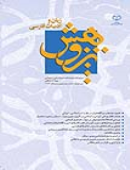بررسي و تحليل عناصر بومي (ديني و ملي) بزرگترين رمان فارسي*
محورهای موضوعی : Research in Iranian classical literature
1 - دانشگاه پیام نور
کلید واژه: كليدر دولتآبادي ادبيات بومي هويت ايراني ادبیات داستانی,
چکیده مقاله :
كليدر يكي از رمانهاي برجسته معاصر است كه بررسي ابعاد مختلف آن اهتمام فراواني را ميطلبد. يكي از اين ابعاد، بررسي زمينهها، ابعاد و عناصر بوميگرايي و هويت ايرانيـ اسلامي است كه كشف زمينههاي آن به شناختن زمينههاي ذهني و رواني شخصيتهاي داستان منجر ميشود. مراد از بومیگرایی در اين بستر عناصر هويتبخش مذهبيـ ملي است كه وجه تمايز فرهنگ ايراني و اسلامی از ساير فرهنگها و خرده فرهنگهاست. نگارنده با توجه به این رویکرد و با بررسی رمان كليدر، مهمترين عناصر بومي را در دو بخش عناصر مربوط به فرهنگ ایرانی (ملی) و فرهنگ اسلامی طبقهبندی، بررسي و تحليل كرده است. مهمترين اين مؤلفهها با تأکید بر آیینها و مناسک و باورها در بخش مؤلفههاي ملي؛ آداب و رسوم مربوط به باورهاي عامه، اشاره و تلميح به داستانها و آیینهای تاريخي و اسطورهاي گذشته است. مهمترين مؤلفههاي بوميِ ديني با توجه به مسئله آیینها و سنن در اين اثر، الهامگيري از واقعة عاشورا در فرجام كار گل محمد است كه نگارنده، تشابه آن دو را در پانزده بند نشان داده است. اين مقاله درصدد است با توجه به این گستره، ميزان توجه و تأثر اين رمان فارسي را از مؤلفههاي بومي (ملي و ديني ـ مذهبي) بررسي و تحلیل كند.
“Kalidar” is one of the most prominent contemporary novels which has failed to be analyzed and surveyed through a variety of aspects by critics. One of these dimensions is the study of the fields and aspects associated with the elements leading to nativity and the Iranian-Islamic identity; as discovering its supporting fields would lead to the recognition of the mental and psychological background of the story characters. In this case, nativity means elements dealing with the national and religious identity which makes a distinction among the Iranian and Islamic culture with the other cultures and subcultures. The writer of this essay has surveyed “Kalidar”, a novel by Mahmoud Dolat-Abadi, through this approach and attitude; categorizing and then analyzing the most significant native elements in two sections; elements related to the Iranian culture (national) and the Islamic culture. In the national elements there is emphasize on the rituals, rites and beliefs, in common beliefs the rites and rituals are of notice, while historical rituals and myths and stories are also alluded too. The most important religious and native elements, regarding the issue of rituals and traditions in this work, is inspired by the great event of Ashura in the fate of Gol-Mohammad; where the writer shows the similarity between those two in fifteen lines. This essay intends to reveal to what extent this novel has been influenced by native elements (national and religious) through a close survey.

